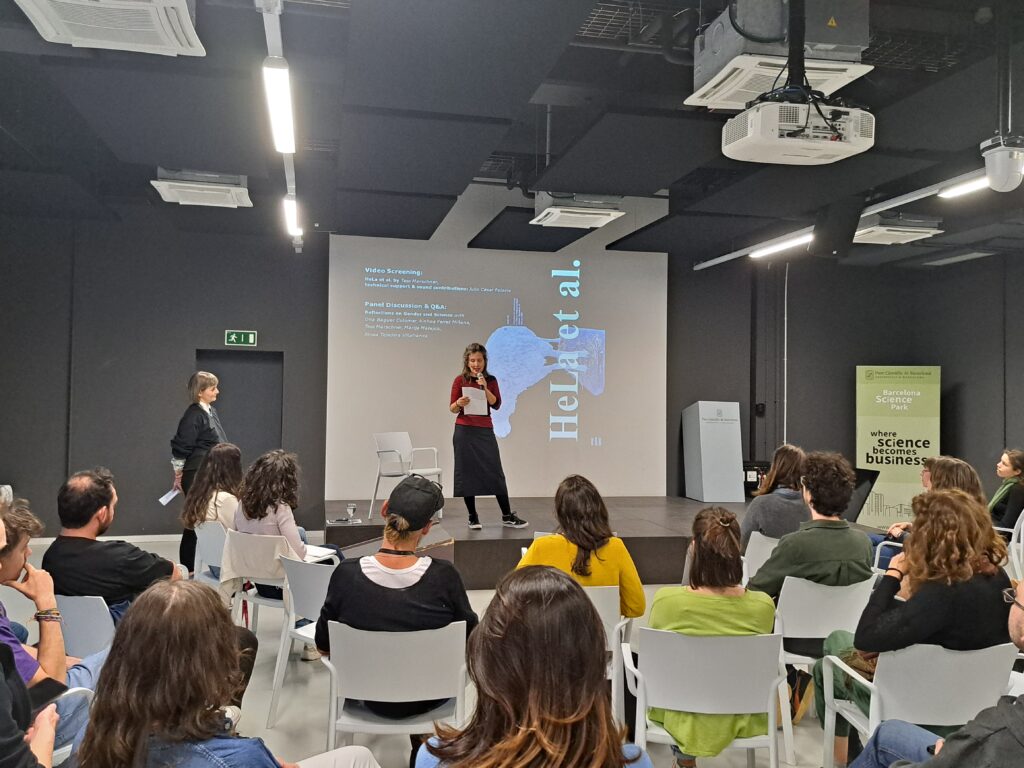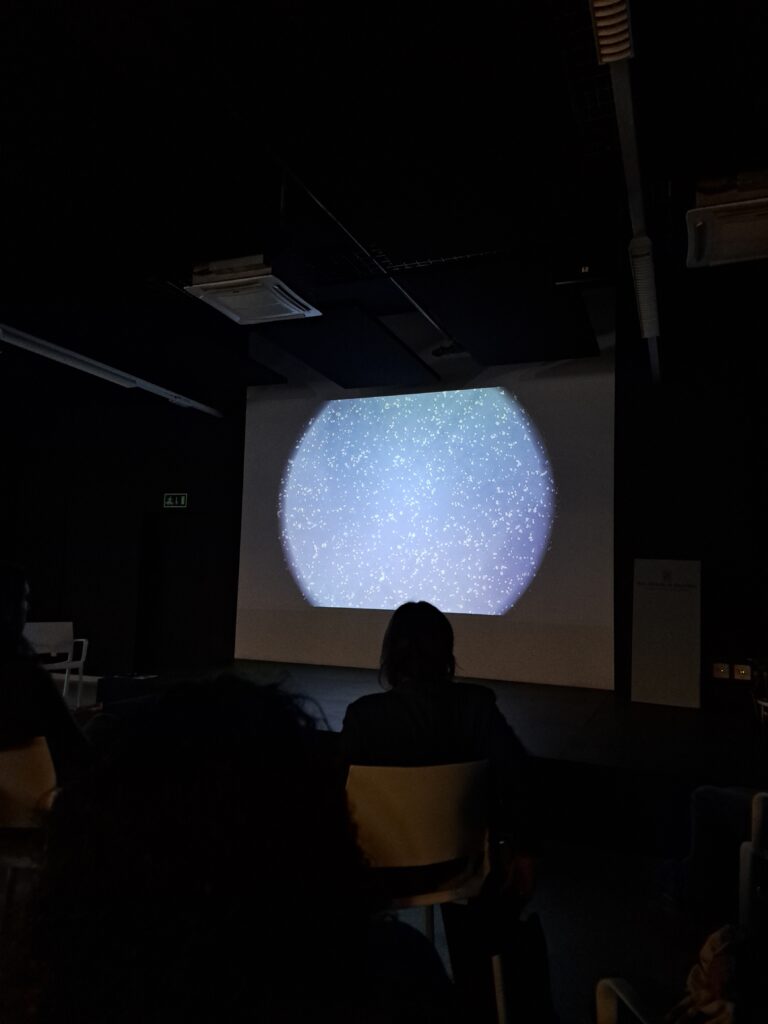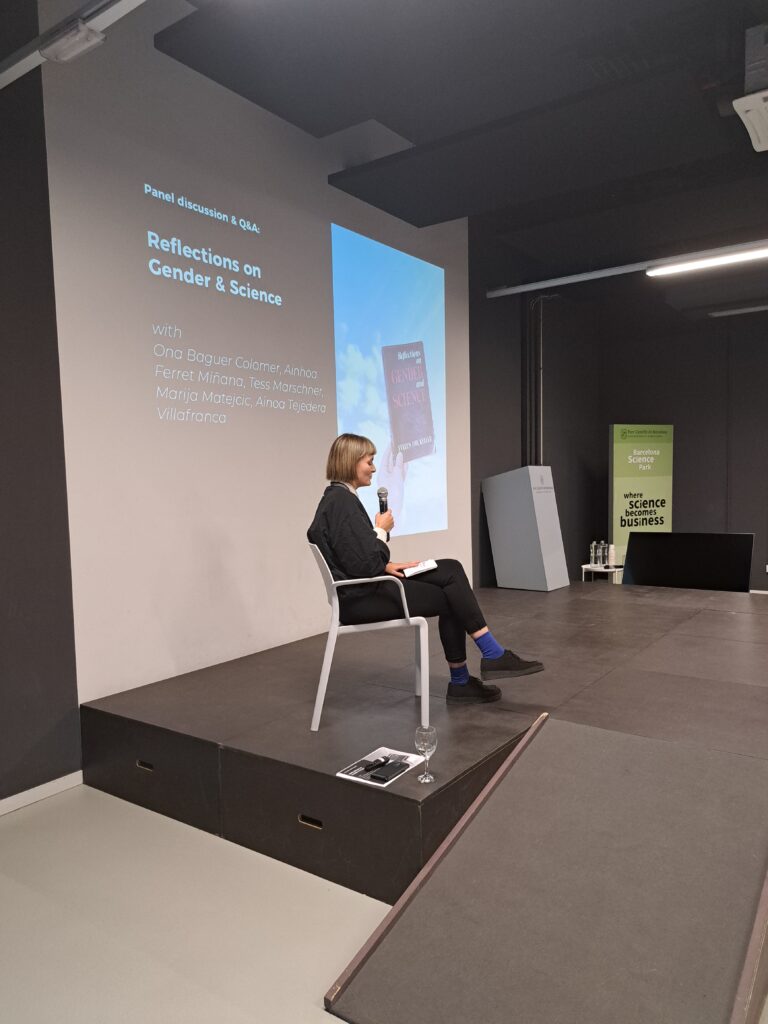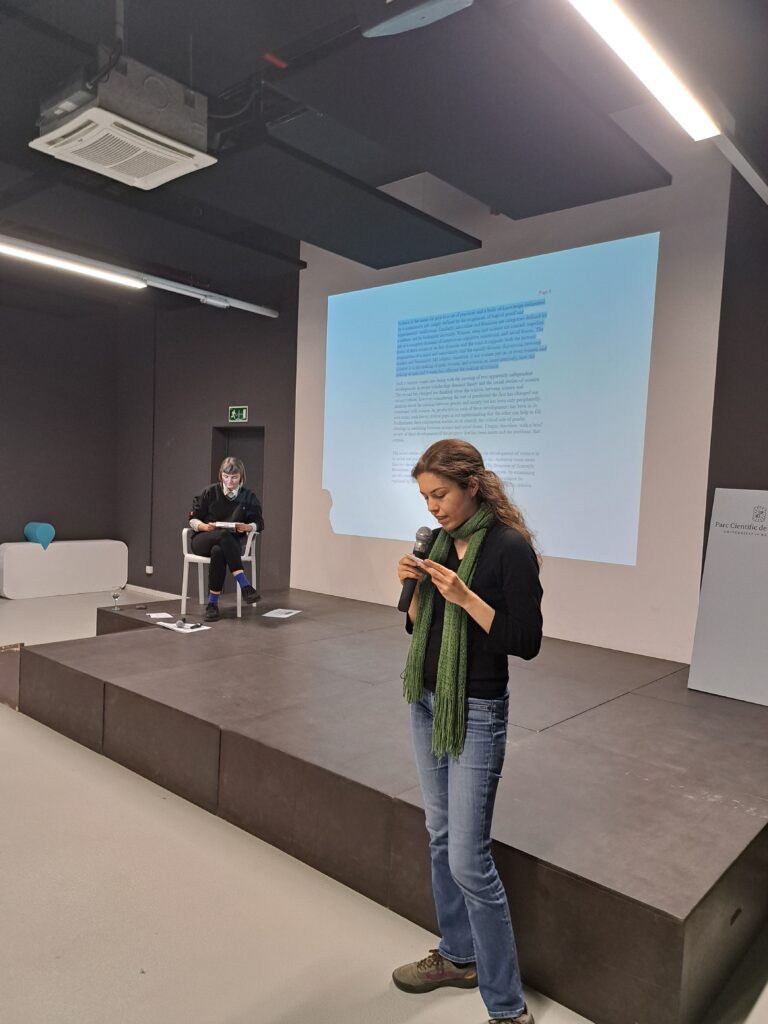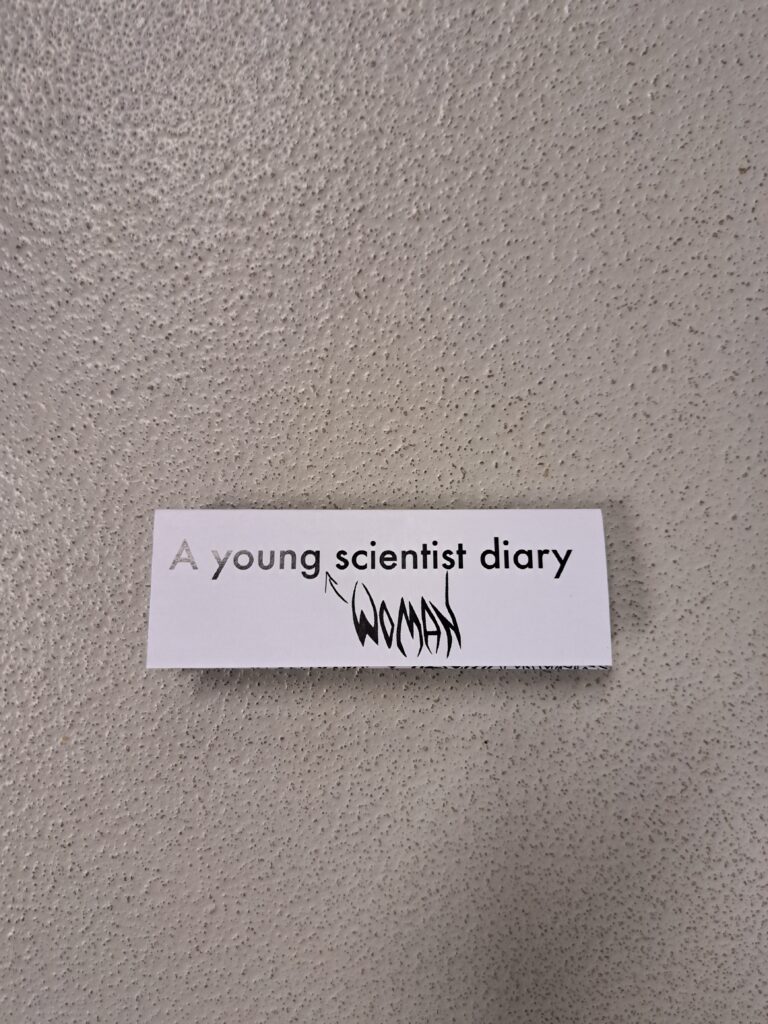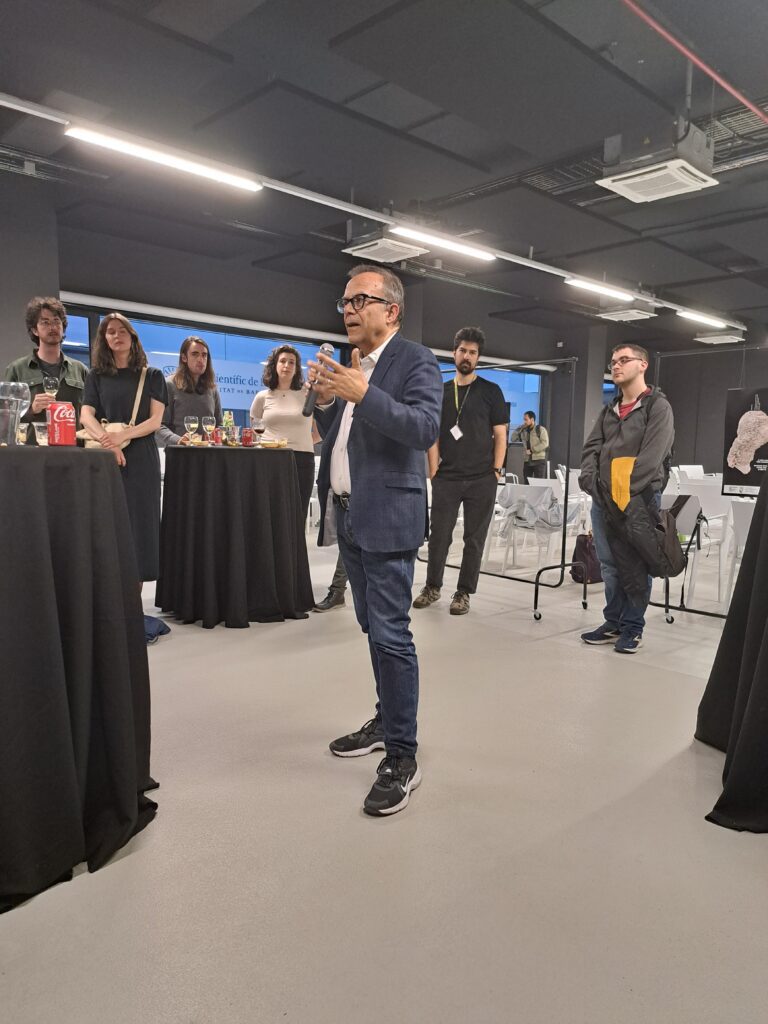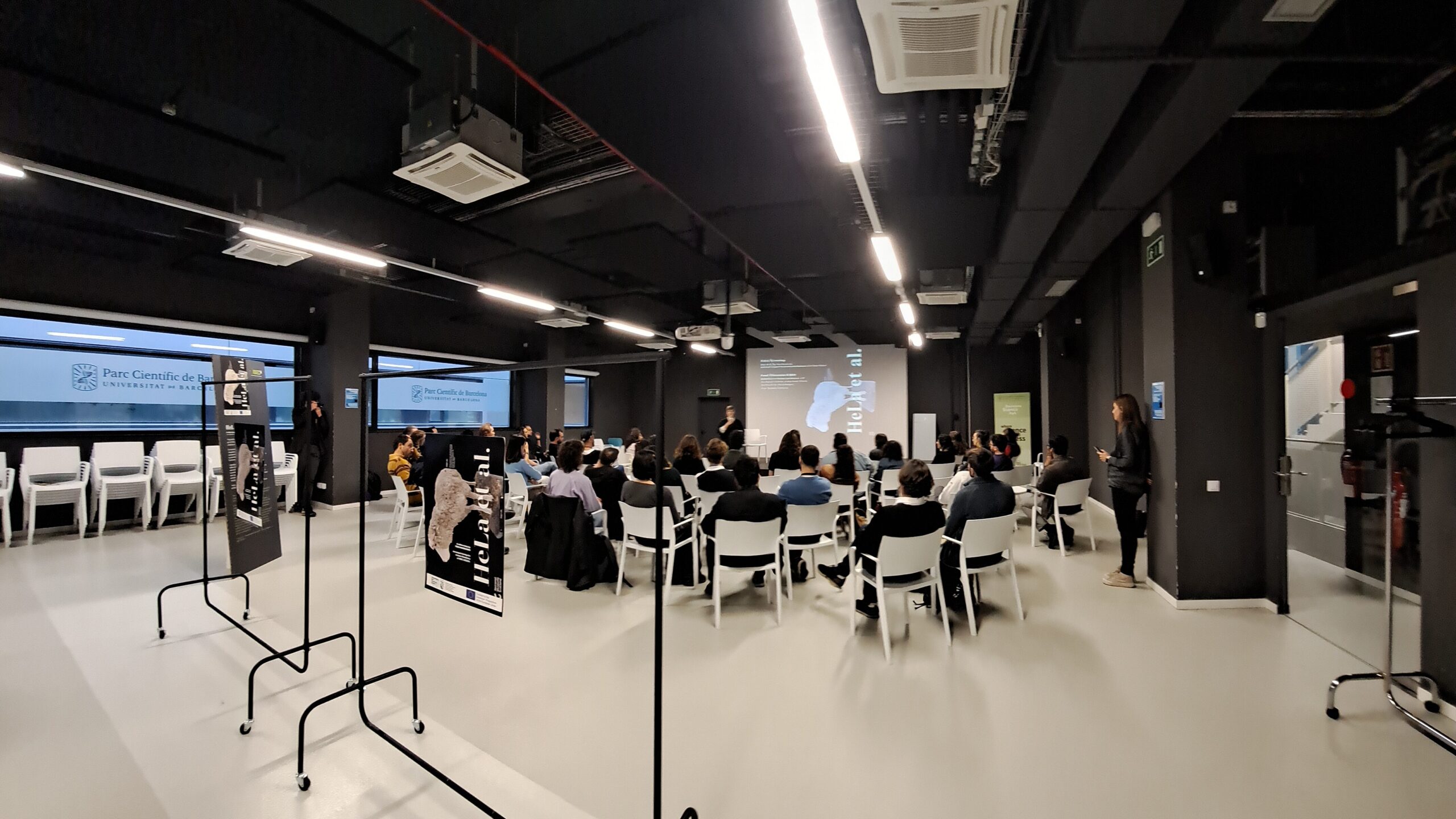Last Friday, the video essay “HeLa et al.“, which is the result of the creative process carried out by visual artist Tess Marschner during her artistic research stay at IBEC. Her work serves as a reflection on female and reproductive bodies within the technosciences. The play will be open to the public until May 25.
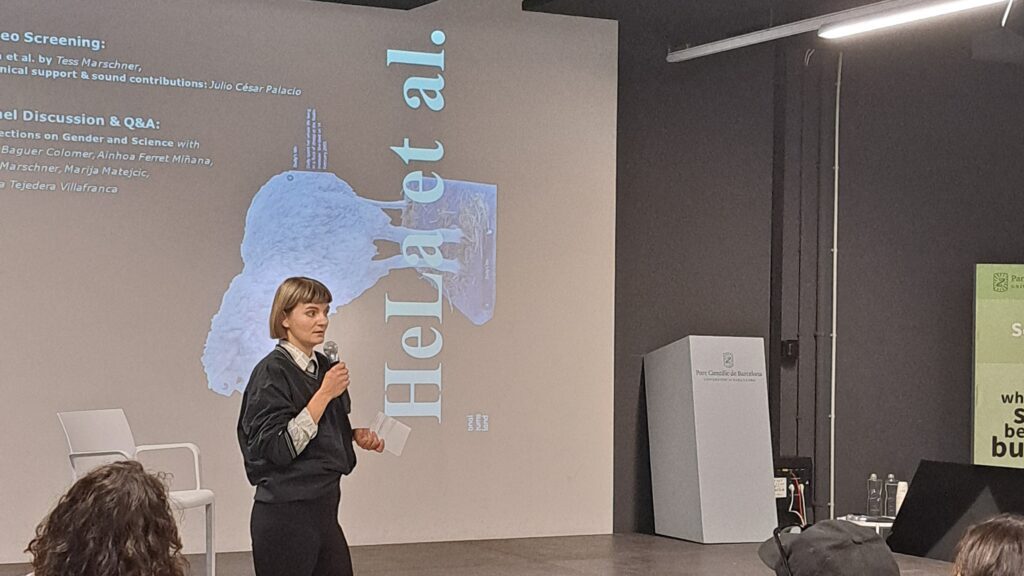
Last Friday saw the presentation of the video essay “HeLa et al.” by visual artist Tess Marschner. The work serves as a reflection on female and reproductive bodies within the technosciences that has been the result of the German artist’s creative process during her stay at IBEC. The presentation space welcomed staff from IBEC and other PCB centres to enjoy Marschner’s art.
Teresa Sanchis, head of IBEC’s Strategic Initiatives Unit, opened the event by highlighting the importance of carrying out this type of initiative, which promotes transdisciplinary research and incorporates artistic vision into the creation and dissemination of scientific knowledge at the institute. In addition, Sanchis highlighted the importance of integrating the gender perspective in scientific research, underlining how our gender identity shapes our approach to science: “It is important to emphasise the impact of women’s personal experiences in science and art can be a valuable tool in this process. In this respect, we are especially grateful to Tess for addressing these issues during her residency at IBEC.”
Tess Maschner then presented her video essay, which was the result of a five-month stay at IBEC during which she was able to visit different laboratories and interview research staff. The experience has helped her to get to know the work and objects of study of the scientists and thus nourish her own artistic research. The result is the work that will now be exhibited in different areas of the Barcelona Science Park (PCB), open to the public until 25 May. In addition, it will also be presented during the poster exhibition prior to the EMB-IBEC Conference, as a satellite activity.
The initial interest that led the artist to IBEC was the historical and fictional exploration of the techniques that make it possible to work with cell cultures: “The possibility of cultivating living matter outside the body, modifying it and hybridising it with bodily materials from other species irritates the concept of a coherent and exclusively human body + mind. These reflections lead me to the term “posthumanism”, Marschner stresses.
The possibility of cultivating living matter outside the body, modifying it and hybridising it with bodily materials from other species irritates the concept of a coherent and exclusively human body + mind. These reflections lead me to the term “posthumanism”.
Tess Marschner
In the video, the immortal cell line of Henrietta Lacks (HeLa), the cloned sheep Dolly, wombs, eggs and mice appear both as technical components of the scientific field and as entities that challenge the notion of the human, raising ethical considerations.
After her experience at IBEC, Maschner confirmed that, for her, modified life and technomodified content are the most interesting issues surrounding the research carried out at IBEC.
The video screening was followed by a panel discussion with IBEC researchers Ona Baguer Colomer, Ainhoa Ferret Miñana, Marija Matejcic and Ainoa Tejedera Villafranca, along with Tess, reflecting on gender-related aspects of scientific production. This interesting discussion arose from their multidisciplinary exchange and also included reflections from the audience.
Finally, IBEC director Josep Samitier closed the event by pointing out that science, like any other human creation, is also subject to biases and flaws. However, its great advantage lies in the fact that theories are constantly being analysed and re-evaluated in order to improve them. He concluded by thanking Marschner for her work: “It is essential to have new ideas, new options to merge creativity, critique and diverse perspectives at the heart of IBEC. We remain open to paradigms and new forms,” he concluded.
This residency has been made possible thanks to funding from the working grant of the Art Foundation of the Free State of Saxony (Kulturstiftung des Freistaates Sachsen – KDFS) in Germany.
